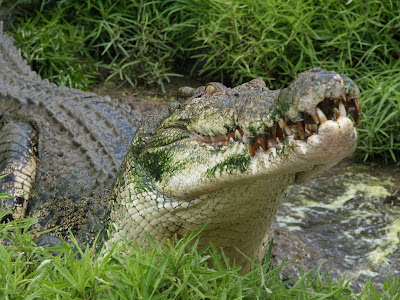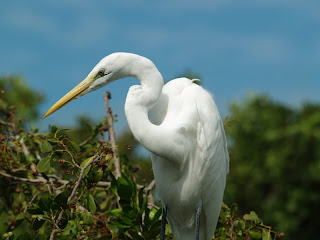
Mt. Kilimanjaro has had a magical appeal for me ever since I climbed it as an eleven-year-old with my father, even though it was an awful experience. We did everything the wrong way. There were no training hikes to prepare us for the grueling physical challenges of the mountain and no guides to show us the most effective way to the summit. We didn’t bring enough water and our cotton clothing was completely inappropriate for both the tropical conditions at the mountain’s base and the frigid glacier at its highest elevations.

Still, we made it to the summit, 19,345 feet above the East African plain and the view from the top of Africa’s highest mountain is something I will never forget. Kilimanjaro was the first mountain I ever climbed and ignited my lifelong interest in exploration.
Over the next 35+ years returned twelve times since then and have discovered that for those who try to climb Kili, the mountain is almost always a metaphor. You climb it not just to reach the summit, but to prove something to yourself. This was particularly true on one particular expedition, in January 2005, when I led three to the summit.

For Keech Coombe, Kili was a physical test. In February 2004, this athletic twenty-seven-year-old broke her neck in a horrific skiing accident that nearly killed her. She spent weeks in the hospital with a halo device attached to her head and upper vertebrae – her doctors were uncertain if she would ever be able to walk again. Miraculously, Keech made a nearly complete recovery. But could she return to her pre-accident form? The mountain would give the answer.

For Alan Valdez, it offered a shot at redemption. A fifty-five-year-old Wall Street trader, Alan had tried to climb Kilimanjaro in 1980 but ignored the warning of “pole, pole” (pronounced “poh-lay, poh-lay,” it means “slowly, slowly” in Swahili) and tried to reach the summit in a mere three days. Suffering from altitude sickness at 16,000 feet, he’d had to retreat to lower elevations.

For Kay Foster, Kilimanjaro represented a new lease on life. A sophisticated older woman who lives on Beekman Place, Kay had admitted to me privately that she had not emerged from the funk that had engulfed her ever since her husband had passed away several years earlier. The idea of climbing Africa’s highest mountain seemed to light a fire inside her.
As we set off for Tanzania, Kilimanjaro had unexpectedly become a metaphor for me, too. Bedridden with the flu for three weeks prior to departure, for the first time in my life I had serious doubts about my own ability to lead a climb. Kili would be a test with the outcome very much in question.
After two days of rest and acclimatization in Arusha, a village at the foot of Kilimanjaro, we headed to the Machame Gate (at 5,900 feet), where we would begin the climb. We could see Kilimanjaro rising majestically out of the African plain, a sight unmatched anywhere on the globe because Kili is not part of a mountain range: it is the highest freestanding mountain in the world.

A tropical rainforest circles Kilimanjaro at its base, so for most of our first day we hiked under a canopy of high trees, moss-coated vines and ferns. The calls of the colobus monkeys that make the forest their home filled the air. After nine hours, we emerged from the rain forest into a dryer, savannah-like part of the mountain, where we made camp for the night, just below 10,000 feet. Waiting for dinner in our small mess tent, everyone looked exhausted. Kay arrived much later than the others, looking pale and very weak. Privately, Keech and I worried that she would never be able to reach the summit.

Dinner was served and we devoured the high carbohydrate meal of rice, pasta, bread, chicken and vegetables (typically hikers burn 3,500 to 10,000 calories per day). As we ate, we shared stories of turning points in ours lives, past romances and earlier memorable journeys.
We awoke the next morning before sunrise to a frigid chill in the air and set out on the next leg of our journey. Trekking through heath and moorland, our goal was Shira Camp, located on a spectacular high ridge at 12,600 feet. But a lightning storm suddenly materialized and we were showered with hail that soon turned to frozen rain. Rivers of water were splashing down the trail at our feet.
We slogged our way up, getting soaked and muddy in the process. There was little relief when we reached Shira – our tents seemed precariously placed on the ground and the porters (led by our guide, Jonas Rutta) feverishly dug drainage trenches to route the water away. As we huddled in the mess tent for dinner, everyone looked worried.
We awoke to find the sun shining. Our relief was palpable, because ahead of us lay a difficult day; we would hike across the high desert to 15,000 feet, then descend to Barranco Camp at 12,750 feet. This would allow our bodies to acclimatize to the higher elevation before we made our push to the summit.
As we set out that morning, we experienced the wrath of Kili’s fast-changing weather as the sunshine turned to rain, slowing our pace and wreaking havoc on our fragile emotions. Descending to Barranco, we saw a thunderstorm of frightening proportions up on the summit--a grim coda to a day that had been physically and emotionally exhausting.

Keech seemed to be doing well – she had experienced no physical difficulties so far, and I watched with amusement as she taught the porters how to properly toss a Nerf football. Alan appeared strong and relaxed because he had learned “pole, pole” as his mountain mantra. Kay, on the other hand, though a dogged optimist, had been struggling. The climb was taking an unmistakable physical toll on her. And the most difficult part was still ahead.

The next day, we ascended the Great Baranco Valley and reached our camp at Lava Tower, a two hundred foot column of orange volcanic rock at 15,000 feet, in the early afternoon. With some time on our hands, Keech and I decided to do something we hadn’t done in five days – bathe. Isolated behind a outcropping of rocks, a stream and waterfall had sprung to life from the recent rainfalls. Finding separate, secluded terraces, we stripped off our dirty hiking clothes and plunged naked into the frigid waters for the briefest of exhilarating baths.
The next morning our tents were covered in ice – it had snowed throughout the night. This day would be an easy one, a short climb to 16,500 feet to our next camp, at Arrow Glacier, our introduction to the famous glaciers that cover the uppermost slopes of Kili. There, the sound of distant avalanches made everyone uneasy. Our party was experiencing the first real effects of high altitude: appetites had diminished, and several of us were suffering from headaches.

As we awoke for our seventh day on the mountain, we all knew that the most difficult leg of the climb lay ahead. The Western Breach rises sharply up to the rim of Kilimanjaro’s volcanic crater, an intimidating scramble of rocky crags and steep drop offs. So we set off and slowly, winding our way up the steep path. A difficult climb in normal conditions, the route was now covered in ice, so Jonas and I had to painstakingly cut steps into the frozen surface with an axe.
The pace of the climb slowed and the group spread out. At lunch, we waited over an hour for Kay, but she never showed up. Knowing Jonas had dropped back to join her, we pressed on, up a series of rock scrambles, where we struggled to pull our bodies through narrow canyons and up and over large boulders. Our normal chatter was reduced to breathing and grunting. After a series of false ridge tops, we emerged onto the flat terrain of Kili’s crater, 18,750 feet above sea level and resembling an arctic moonscape –accented by the huge, indigo-streaked glaciers to the west. Uhuru Peak, the highest point on the crater rim and the summit of Kili, was visible a mere 600 feet above us.
Keech and Alan arrived but at 5 p.m., there was still no sign of Kay. Then, an hour later, we were astonished to see her stumble up over the ridge, barely able to walk and completely spent. The most difficult part of the climb was behind us.
We awoke the next morning at 5 and left camp at 6. We watched as the sun rose into a cloudless blue sky. The weather gods of Kili were smiling. For two hours we ascended a steep, winding trail, up a series of rocky switchbacks. No one spoke, and there was no resting on this last push to the summit. We finally emerged onto a slightly-graded plateau and crossed a few hundred yards to a modest wooden sign, which marked the highest point on the African continent. Success.
I looked at Keech and saw that tears of joy had welled up in her eyes. Exactly one year before she had had her devastating skiing accident. But here she was on the summit of Kili. Alan was simply ecstatic – a twenty-five-year-old monkey was finally off his back. He hugged Jonas and, grinning, repeated for the last time the mantra that had gotten him there: “pole, pole.” Kay was the last to arrive, staggering and exhausted. I told her to take in the view, smell the air, and remember the moment. It would be with her for the rest of her life.

I took in the view with her. I had seen it before, the vast African plain stretching for hundreds of miles, Mount Meru to the west and beyond it, the Serengeti Plain. I glanced over at Keech quietly sobbing to herself, at Alan beaming and at Kay taking in the roof of Africa. For all of us, Kilimanjaro had truly become a mountain of dreams…fulfilled.
















































